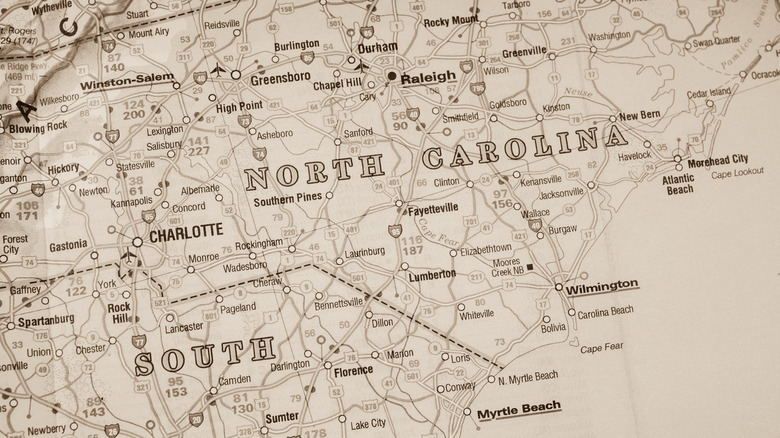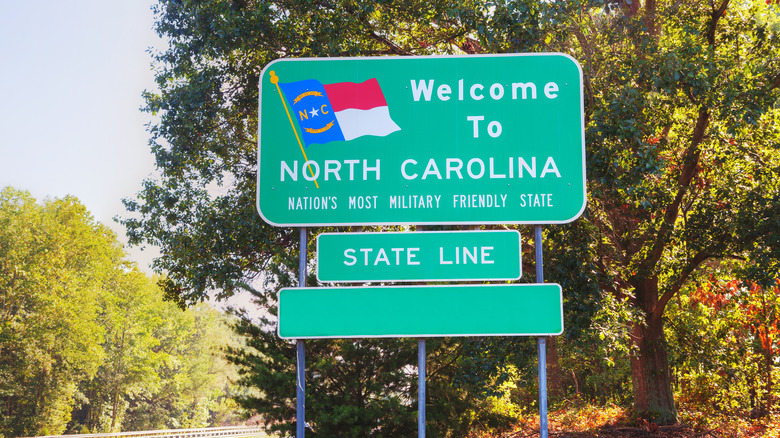The Real Reason Carolina Became North And South Carolina
The Carolinas were fraught with peril as an early frontier of the American colonies along the East Coast, struggling against everything from political conflicts to piracy (via NCpedia). The constant battles against corruption and criminals, along with resistance from the Indigenous population against the oppressive colonizers, while trying to build a society in the massive land of Carolina, led to a difficult first half-century for the colony.
The size and distance of the land made the colony of Carolina difficult to govern. Major settlements like Albemarle, Cape Fear, and Charles Town were spread far apart, and transportation in those days was no easy feat. If it was difficult to physically get around the area, it was even more difficult to administrate that movement on top of all other issues thrust upon the men in charge of the colony. Towards the end of the 17th century, a solution was put forth: hire a deputy Governor to control the northern half of the colony. The change has stuck ever since.
The Carolinas had very different histories
The line drawn between North and South Carolina wasn't completely arbitrary, as the two halves were decidedly different in industry and ethnicity. According to U.S. History, South Carolina had a major role in supporting the British Empire's endeavors in the Caribbean and became a hub for shipping — and slavery. Slavery was so rampant that Africans quickly became the dominant ethnic group in the South, particularly around Charles Town, which was eventually renamed Charleston.
North Carolina, by contrast, housed many displaced and discontented from the other colonies as they set up small farms throughout the northern half of the sizable colony. By the beginning of the 18th century, calls to make the split between North and South Carolina more formal escalated, and in 1712 the Carolinas officially became two distinct colonies — a peaceful split brought about by the ample size of the land and considerable differences between the two halves.

